Investing in Members So They Can Better Invest in Themselves
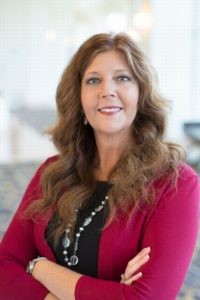
“Members do business with members,” states Chris Haerich, senior vice president at the Professional Association for Customer Engagement (PACE), capturing not only the spirit of association communities, but an open secret in the customer engagement/contact center industry: Most of those working to improve customer service practices have known each other for years and enjoy a collegial atmosphere of trust as a result.
Chris grew up thinking she’d be an English teacher. But the opportunity to work for a contact center while in college changed her mind, and eventually led her to work for PACE, where she directs strategies and campaigns to recruit and retain members for the only non-profit trade association dedicated to the advancement of companies that engage with customers via the contact center.
Chris spoke with Association Adviser about making a conscious effort to invest in one’s association membership as the way to guarantee you’ll receive the membership value you want, and why everything about her industry keeps her up at night.
Association Adviser: You started out with a bachelor’s degree in English. How did you find your way to working in customer service?
Chris Haerich: I was born and raised in South Dakota, in a really rural town. When I graduated, you either went to South Dakota State University, the University of South Dakota, or my college, Northern State University. Few people left the state. I moved to Aberdeen [South Dakota] to attend NSU and I was going to be an English teacher. I had wanted to do that my entire life. But during my education, I realized I had to have money to live, and had to get a better job.
I ended up working for a contact center in Aberdeen that, besides the hospital, had the most employees in town. I rose quickly through the ranks, handling inbound customer service communications. I was still studying for my English degree, but as I got promoted I was making more money than I would ever make as a teacher. Then my managers, who were in Omaha, asked me to move to St. Joseph, Missouri. I finished my degree, but then I kept working in customer service. I can write a good letter or email, but otherwise that English degree doesn’t do much for me today!
AA: How did you find your way to PACE?
CH: I started volunteering with PACE when I worked for Protocol Global Solutions, an outsourcing and customer service company. Although Protocol was large, with offices all over the U.S. and Canada, it was still small enough that I had the ability to walk into our CEO’s office and chat, have a flexible schedule that allowed time for volunteering within the industry. I didn’t feel like a number there, and that was important to me. But then Protocol was bought out by a large, $1.5 billion company, and the fit just wasn’t right for me anymore. PACE found out I was looking for a new position and asked me to come work for them.
AA: How long were you a member before becoming part of the staff?
CH: About 9 years. It’s nice to know both sides of the coin so that I can help guide our new members in getting the most out of their membership while helping retain current members with discussions about benefits they might not be taking advantage of.
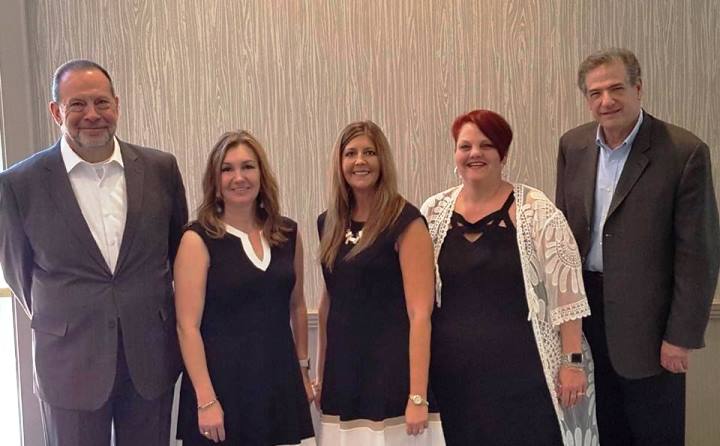
AA: How does knowing “both sides of the coin” inform your work as a staff member?
CH: Knowing the member experience has helped me recruit and retain members. One of the things I tell people considering becoming members is that PACE has a triangle of member types: Those from Fortune (recognizable) companies, those from customer service contact companies, and those from technology suppliers. And despite some of these companies being much larger than others, we’re all familiar with each other because we depend on each other to do business, follow regulations and provide great service. We all put in the work to get a good return on our association membership and help advance the industry. Protocol wasn’t a “big fish” when we were a PACE member, but we could still compete with bigger companies because we chose to get involved with associations and to put in what we wanted to get out of our membership. Because of the time and effort, we put in, we were able to make valuable connections and that made all the difference in growing our business and in turn, our revenue.
If you’re going to sit back and expect things to come to you, you won’t get a good ROI. You must put something in to get something out. That’s what I tell people considering membership or considering dropping out. That has saved a lot of members, and helped people adjust their mindset. I think our society is in a position where we feel entitled to results, but you still have to work for it.
AA: What do your daily responsibilities include?
CH: A better question is: What don’t they include? At the core, I carry out the strategies and value proposition that our board of directors sets. My staff and I work to help with membership retention and growth, obviously one of the biggest hurdles in any association. We look at membership retention and how to curtail it, and try to answer the question, how do we adapt and change to all of the industry challenges so that we can adjust our benefit offerings to continue to provide value to our membership?
I’m responsible for everything operational – from how we send out our renewal invoices to monitoring our financial controls and making sure we stay within budget. And that our staff follows PACE’s mission of promoting our members’ ability to provide outstanding customer service and sales solutions delivered via omnichannel communication including voice, email, chat, text and social media.
AA: You’ve worked in customer services/client services for almost your entire career. What are some themes you’ve observed about what customers want across industries?
CH: Here’s what I struggle with lately: As I’ve grown in my career, I’ve realized everything is pretty much the same, but the methods for how we get there have changed. Customer service professionals aim to resolve an issue on the first attempt. If you can’t, you explain the reasons why. You can’t always move a mountain, but the goal of a first-attempt resolution remains. However, what’s interesting is how different customer service moves now compared to the past 10 or 15 years. Fifteen years ago, people interacted with customers by phone or snail mail. Then email crept in. Then all of a sudden, the internet and social media exploded. If anyone is unsatisfied with anything anymore, they plaster it all over social media. It doesn’t matter what the issue is or how big it is. It’s that all-about-me attitude, and if I’m not happy, how is the company going to make it right? Companies have to be on their game all the time.
In customer service-oriented fields, you’re working with people. People make mistakes! Maybe the training they went through wasn’t up-to-date, or maybe they’re on the job for the first day after their initial training and are still learning. Our members are figuring out how to appease customers and still make it cost-effective for them.
At the core, people want first-interaction resolution, and customer service techniques have exploded along with technology. But we still need to take the time to have a dialogue to understand what the other person is talking about and not always focusing on the bottom line. Taking the time to really listen and understand the customer can help diffuse situations that might have otherwise escalated. It’s not always what the customer says, but it is how they say it.
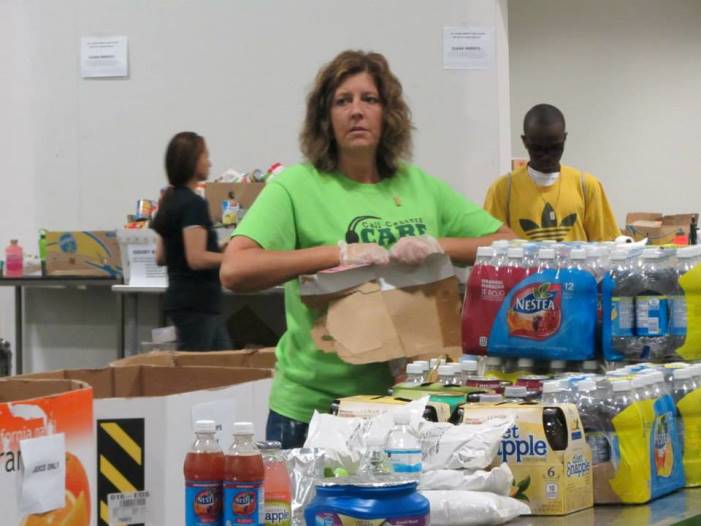
AA: PACE is the only trade association dedicated to helping advance companies that engage with customers via contact center. How does the association accomplish this goal?
CH: We focus on providing a unified voice for the industry when we advocate for them. There’s a bad connotation around the words “contact centers” based on anecdotes about shady companies swindling people out of money by phone. But the contact center industry employs almost 48 million people throughout the US alone. That’s a lot of jobs and taxable income coming from this industry! State and federal governing bodies tend to pigeon-hole all contact centers into the same category and that isn’t the case at all. Some state and federal organizations, like the Federal Trade Commission or the Federal Communications Commission don’t understand that, like with any industry, there are good and bad actors. PACE members represent the good actors that follow the rules and regulations. PACE works closely with these agencies and Congress to educate them on what proposed and passed legislation will mean for those that work in the industry and their families.
Our members no longer operate “call centers,” but “contact centers.” Ten to 12 years ago, you really only interacted with companies via the phone, email or snail mail. Now, you have to be able to master calls, but also online chat, click-to-chat, text, mail AND email. For additional customer engagement, it used to be that you could do outbound marketing and sales, and that was it. Today that is most definitely not the case! If you think about how many ways it’s possible to get in touch with a large corporation in the financial or travel sector, it’s mind-boggling.
PACE strives to provide industry best practices and education for our members. Peer-to-peer learning can be such a valuable resource. You have so many people and different approaches to customer engagement. We focus on that and professional education. We have our Washington Summit in September and our Annual Conference & Expo in April. Seventy-five to 85 percent of our attendees at these events are VP level and higher. They have been around for a long time and want to understand how to enhance their business and network with like-minded people. Companies don’t have thousands of dollars to spend on continuing education, but by belonging to our association, you get that at your fingertips through our events, communications and online resources for a very reasonable price.
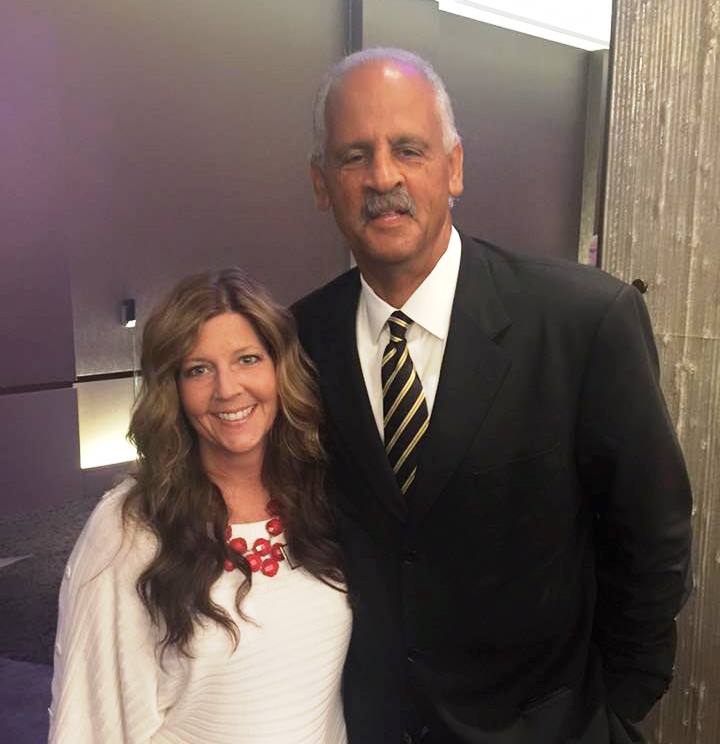
We talk about networking and its value a lot. I think every industry says this, but: The customer engagement industry is very small. I have members who I worked with in 2001. We have long relationships! One of our PACE mantras is, “members do business with members,” because if they belong to our association and plan to partner with another member business, chances are that organization is maintaining compliance with state and federal regulations and has a good handle on solid operational practices.
AA: You’re listed as the contact on the Annual Convention & Expo (ACX) section of PACE’s website for people who need to justify their attendance. What do you tell them?
CH: Any time I’m on the phone with someone that is considering attending one of our events, I want to understand their reasons for wanting to come. Everyone has different reasons for attending our events, whether it is to network, receive education, understand the latest in technology advancements, etc. That helps me guide them in how to make their attendance worthwhile.
As I stated previously, there aren’t a lot of extra funds available for professionals to attend events, so making sure that our events focus on what they are specifically looking for and how to help them achieve that, is very important.
AA: Tell us about the #ProudPACEMember campaign. What is the motivation for this campaign?
CH: I used my experiences as a member and a staff member, along with our marketing consultant, to come up with this campaign. If I buy something on Amazon, I look at the stars a product has earned and the reviews it has earned. I want to know what I’m getting into! Nothing has a better stamp of approval than someone’s recommendation. So we apply that principle to PACE, and came up with the #ProudPACEMember campaign. We want our members to talk about the benefits we work hard to provide. Why do they keep renewing membership over and over? Why did they join in the first place? Tell your peers while showing off how you’ve benefited!
We’ve been quite successful with this campaign. People can submit video or written testimonials. The #ProudPACEMember campaign is kind of self-serving because we link back to their company’s website, but first-hand testimony is the best recommendation you can get.
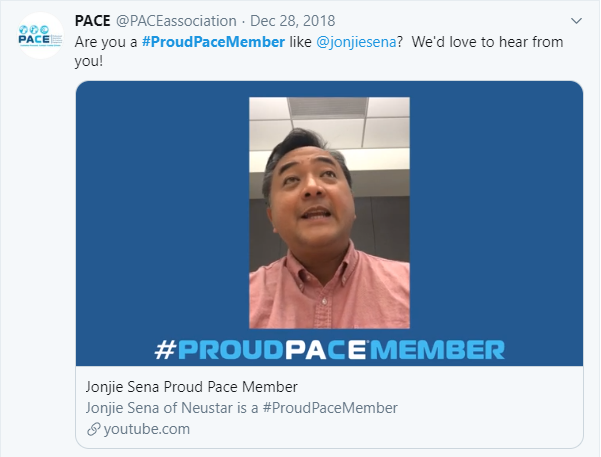
AA: In terms of your job, what keeps you up at night?
CH: Member retention and acquisition. People and companies don’t have as much expendable income as they used to for extras like association membership or event attendance, but we want to stay on their list. If they belong to multiple organizations, I want to provide the highest value for the dollars they spend, so that they continue belong to PACE. That’s not easy to do.
Related to that, making sure we’re being the best we can for our members keeps me up. It’s corny, but true. I often think, are we giving members the best ROI? Are we helping them comply with state and federal law? We often interpret rulings and new regulations, and if we interpret it wrong, that could be disastrous. We strive to keep talking with the FCC, FTC and the Consumer Financial Protection Bureau, so much that they will call us and say, hey, we’ve had complaints – How does this technology work? Our relationship with those agencies is not always friendly, but they know they can come to us to understand the industry.
Oh, and hotel room blocks! We’re coming up on our event in September and we have to fill it by the end of August!
Everything keeps me up at night because when you’re as invested in this industry as I am, you want to make everyone happy. Making sure we have our processes and procedures buttoned up and are doing the best for our members, that’s something we might never achieve perfection on, but darn it, we’re going to try.

